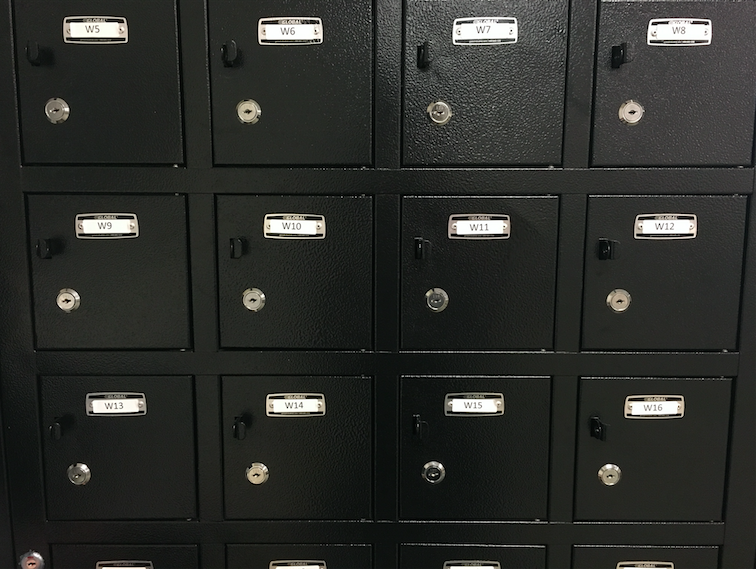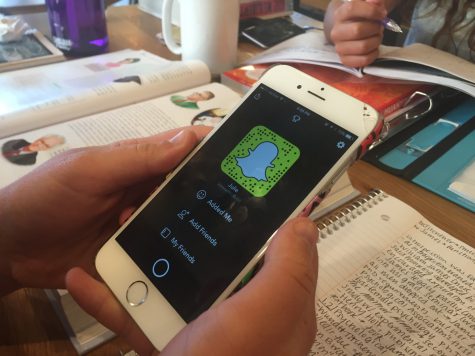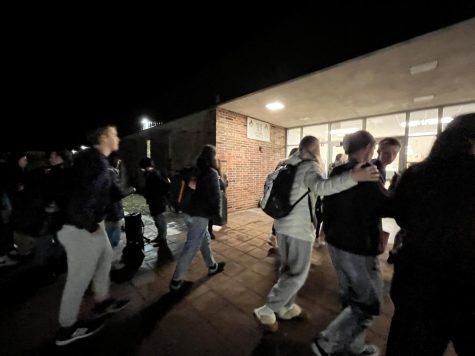On autolock
Cell phone jails bring mixed emotions to the halls of West.
September 1, 2016
The 2016-2017 school year opened with many new surprises such as more TV’s, big posters of students and cellphone jail. “Jail” is all the buzz at West with people asking if it’s legal for teachers to lock up their phones, how long their phones are going to be gone and how to avoid it from happening – the West Side Story met with Dr. Shoultz and other faculty to bust the rumors and find the truth of the “West High Jail.”
The cell phone detention lockers are a wall of twenty four little black boxes that resemble the wall in a post office. The 9th and 10th grade center has their own set behind the secretary desk, while the student advisory center (the in-school suspension room) has theirs on the wall right when you walk in.
“Lockers are for students to secure their cellphone when they have been asked to because it has become a problem with their education or education of others,” Shoultz said.
Teachers often have to ask students to put their phones away, so after it becomes a recurring problem it is referred to a dean. They then attempt two separate solutions to the problem: talking to the student about keeping it away on their own during that specific period or the whole day, or going directly to the parents about having it locked up during an entire class day; whatever is necessary for each student and each case. If the parents agree to locking up the phone, there’s a trial period of three days until the next meeting to discuss if the student could handle the responsibility again.
“We heard from teachers [cellphones were] a problem last year which is why we are instituting this to help students get over the addiction,” Shoultz said. “We hope it’s only needed to be used for people that just can’t stop checking their phones.”
It is possible that the phone could be in there one day, everyday, or only half a day, but that judgement is entirely up to the dean. The only case where there is no argument up for keeping your phone is in the student advisory center since it is a no phone zone. When the student arrives in the morning, the phone is put in a locker by default to keep the student focused on getting homework done during their suspension.
“So far this year I had two students have to put their phones in the locker during their suspension on August 30th,” said Bethany Johnson.
The issues with phones is that they are capable of sharing so much information that the teachers can’t tell if we’re using a calculator or taking a funny snapchat; or texting our parents or using an app to solve our math homework.
“Ultimately we want people to be responsible and learn how to be [in and outside of class] with their phones,” said Shoultz.
It isn’t necessarily illegal to take a student’s property, but once a teacher does, it is in their hands and can become a liability if something were to happen to it. The beauty of the detention lockers is to keep the distraction locked up from anyone taking or harming it, allowing West to prevent liabilities and maintain the safe education system that it has provided for almost fifty years.
“If we take it were now responsible for it so that’s why we put it in the locker so the student knows where it is, just like a squirt gun or something else that can be distracting, teachers can take it away, we just don’t want them to,” Shoultz said.
Seniors appeared to lean against the lockers rather than toward them.
“I think they’re pointless because no kid is actually going to give them their phone,” said Dillon Crowell ’17. “Nobody is willing to go along with it.”
Mikayla Johnston’17 had a similar opinion.
“They’re a waste of money and honestly aren’t going to do anything to deter cellphone use because almost none of the teachers will actually use the lockers.”
Whether you believe the lockers are a burden or a blessing, they are here to stay; all forty eight of them.




















